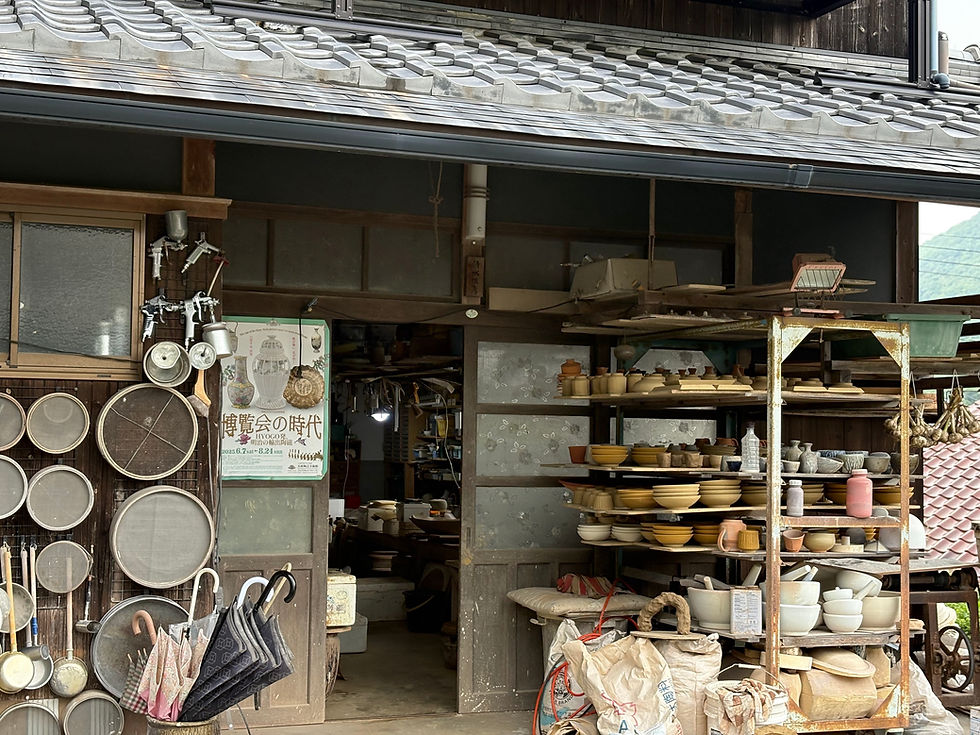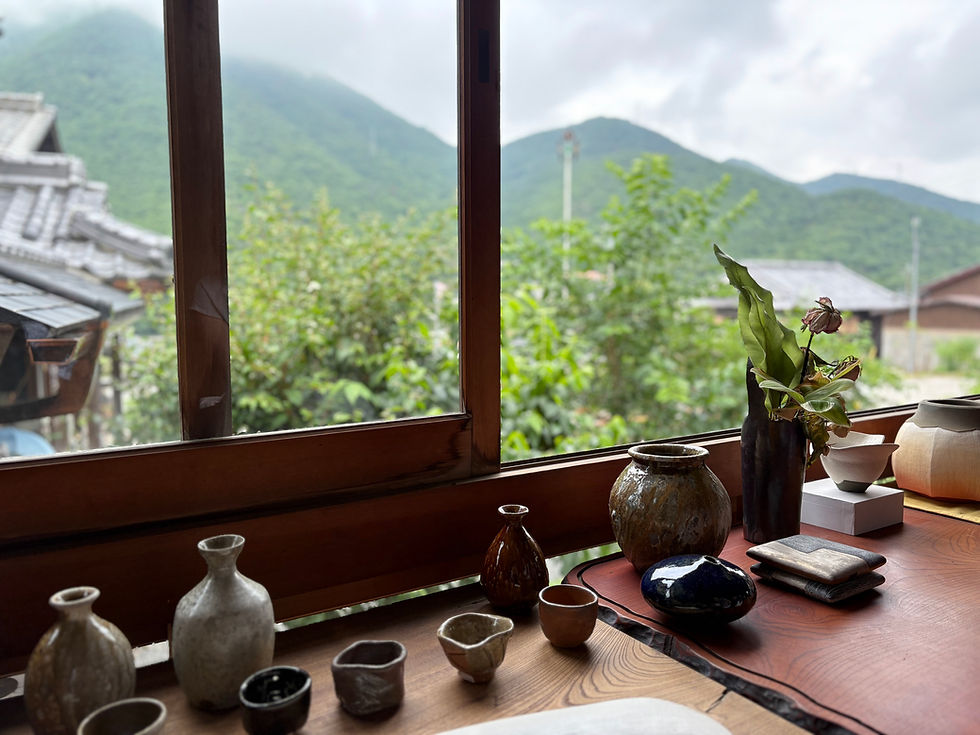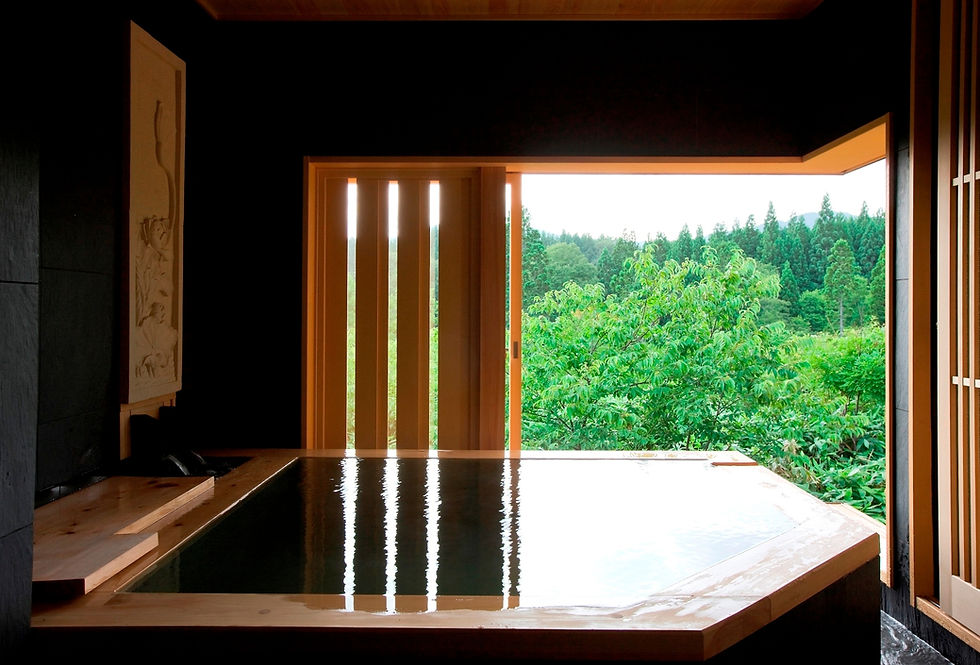Why We Choose Slowly: Tamba-Yaki and the Importance of Mindful Consumption
- ysabelgarcia9
- Aug 8
- 4 min read

It is calmingly silent in Toshihiko Shimizu’s home as he carefully shapes another ceramic mug to join the many plates, bowls, and cups he has created over the years. The first floor of his home serves as his pottery studio; shelves and tables filled with intricately crafted ceramics, with each piece showcasing the skill, patience, and artistry of the maker. The beauty and precision of the work naturally invite one to appreciate Mr. Shimizu’s mastery of Tamba-yaki, yet also encourages thoughtful reflection before making a purchase, a habit we need to recall especially in today’s world.
Rather than prompting impulse purchases, the setting of his workshop invites visitors to slow down, observe, and consider the subtler details of each piece — colors, ridges, and patterns — that make each item unique. This deliberate process not only guides more mindful choices, but also deepens appreciation for Mr. Shimizu’s craftsmanship and the uniqueness of Tamba-yaki.
Tamba-yaki is one of Japan’s Six Ancient Kilns and is known for its rustic charm and deep connection to nature. It originated in Hyogo prefecture over 800 years ago, and reflects the Japanese aesthetic of wabi-sabi which invites people to embrace imperfection and transience. The local clay gives Tamba pieces their earthy tones and robust texture, making each item feel grounded and timeless.
Each and every piece of Tamba-yaki holds a story of a firing method unique to Tamba. Potters, including Mr. Shimizu, use traditional wood-fired kilns, where ash from the burning wood naturally settles on the pottery and melts into a glaze. The intersection of fire, ash, and earth, results in rich, organic surfaces with warm and natural hues. This creates spontaneous and unpredictable patterns that ensure no two pieces are ever exactly alike.
Each of Mr. Shimizu’s pieces are testament to the time and dedication that he has committed to his craft. He has spent over 60 years creating a lifetime’s worth of Tamba-yaki or Tamba ware. Starting his career at around 19 years old, Mr. Shimizu immediately began his training under renowned Japanese potters such as the late Kanjiro Kawai and Kazutaka Ikuta. Now at 80 years old, Mr. Shimizu is passing his craft down to his son, Go Shimizu. Together, they continue to carry out the traditional craft of Tamba-yaki.

Currently, Mr. Shimizu relies heavily on his vision to ensure the quality of each of his pieces. He shared that he is no longer able to use his right hand to intricately shape his works, and part of his body is unable to feel. This limits his mobility and precision during the shaping process. Nevertheless, his days consist of sitting directly in front of a window to allow as much light to aid his vision and guide his movements. He sits in silence, unobstructed, focusing on the current piece he is working on. In order to fully appreciate each piece that sits in Mr. Shimizu’s workshop and home, one must understand the time and dedication that it costs.

In contrast to the mass-produced goods that fill the shelves at Don Quijote where customers are rushing to stock items into their baskets and head to the tax-free lane, the walls of plates, bowls, and cups in Mr. Shimizu’s workshop encourages thoughtful decision-making. Even if two plates look almost identical, differences in firing and glazes made from natural materials such as ash may result in one having a rougher finish than the other. When it comes down to smaller details like this, a customer would spend more time deliberating what would make for a better purchase, allowing them to slow down and be more mindful.
In the remote pottery village of Tachikui in Tamba, Mr. Shimizu’s studio sits nestled between mountains and fields. It’s not a place you stumble upon—it’s a destination. And because it’s not so easily accessible, every purchase here carries more weight. You want to be sure of what you’re taking home. By the time you settle on a piece, it’s no longer just an object, it’s a story– one that’s unique to you. It holds the reason you picked this bowl instead of that one, the memory of standing in that quiet studio, weighing one dish in each hand. It’s a moment of connection you carry with you, long after you leave the mountains behind.
Visiting Mr. Shimizu’s workshop is more than just a shopping trip—it’s a quiet act of appreciation. In a world where convenience often wins, choosing to explore a local area within the mountains of Tamba is a reminder that some things are worth slowing down for. Each plate or mug chosen with care becomes a lasting souvenir, not only of Japan, but of the story, place, and people behind it.
So if you’re seeking something more meaningful than what the typical Golden Route offers, consider stepping off the beaten path. At Tricolage, we believe in experiences that connect you with Japan’s living traditions—where every encounter, like every ceramic piece, holds a story waiting to be remembered.



Kommentare